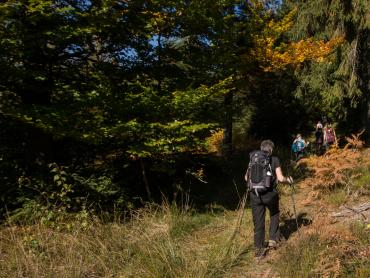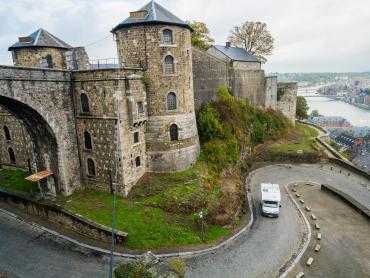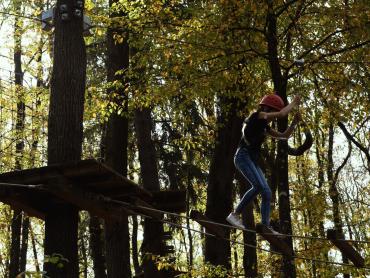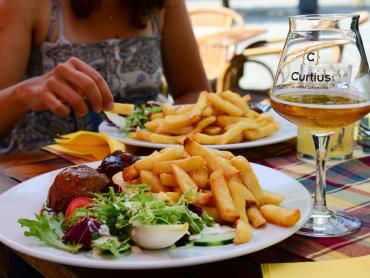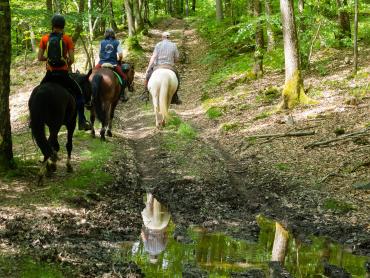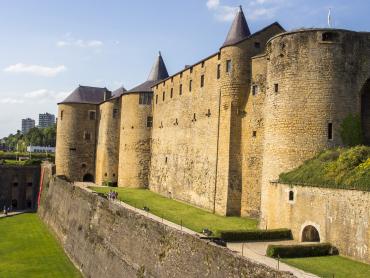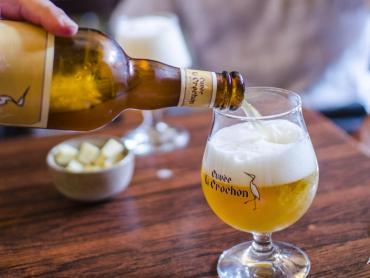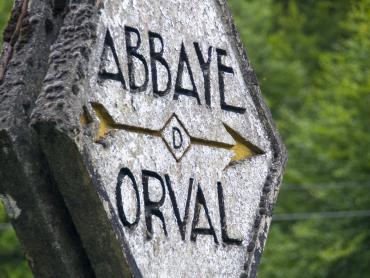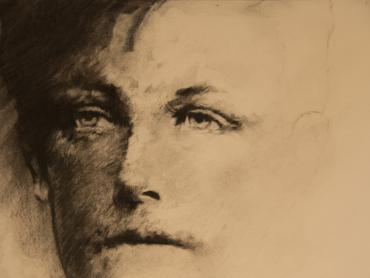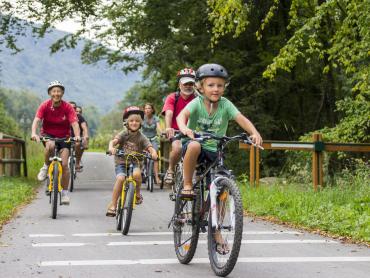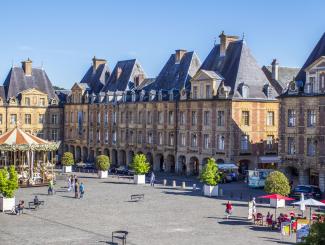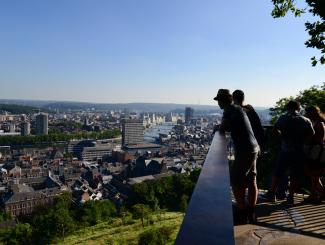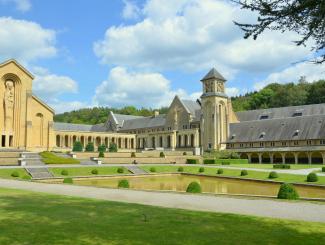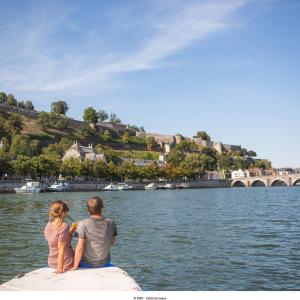The valleys of the Ardennes
The valleys of the Ardennes are a major contributor to the region’s identity, along with its forests. In some places, the valleys are steep cliffs either side of the river, in others they are wide, fertile plains. The Ardennes region is unimaginable without them. The rivers that flow through the valleys developed as major arteries of commerce, given their ease of navigation compared to the difficulty of crossing the forests and hills. Today they offer a range of leisure and sporting activities for visitors.
The Meuse and its Tributaries
The Meuse is the longest and largest river flowing through the Ardennes. From its source near Langres, it makes its way north through France. It is joined by the Bar at Dom-le-Mesnil, then the Semois at Monthermé before it crosses the Belgian border. On its way through Belgium, it is joined by the Lesse at Anseremme, the Molignée at Anhée, the Sambre at Namur, the Mehaigne at Wanze, the Hoyoux at Huy, the Salm at Trois-Ponts, the Amblève at Comblain-au-Pont and the Ourthe at Liège. It crosses into the Netherlands near Maastricht and continues as the River Maas to the North Sea.
The Meuse in France
The Meuse enters the Ardennes region of France at Mouzon, a town which developed at the point where the Roman road from Rheims to Trier crossed the river. The town centre is on an island in the river and is packed with delightful heritage buildings, including an Benedictine abbey with its Gothic church, the Burgundy Gate and the “Spanish Houses”. The river continues to the cities of Sedan and Charleville-Mézières (see their dedicated pages on this website) and also the village of La Marfée near Sedan, with unparalleled views of the part of the valley where strategic battles were fought in 1870, 1914 and 1940.
Bogny-sur-Meuse was a metalworking centre for centuries until the 1950s. Now, most visitors come to admire and explore sites linked to the legend of the Four Sons of Aymon.
Laifour is situated on one of the many meanders of the river and is overlooked by the Dames de Meuse rock formation. Revin and Fumay are both set in double meanders and were formerly centres of the lumber and slate industries. The last town in France crossed by the Meuse is Givet, overlooked by the Charlemont fortress and a former centre for the production of pencils.
The Meuse in Belgium
After Anseremme, the Meuse arrives at Dinant, squeezed onto its banks beneath its massive citadel fortress with its magnificent Gothic-style Church of Our Lady. It was also the birthplace of Adolphe Sax, inventor of the saxophone: a museum tells his story and that of his family of instruments. Then comes Anhée where it is joined by the Molignée.
The Meuse continues on its way north and is joined by the Sambre at Namur, the seat of the Walloon Regional Parliament, with many impressive historic buildings, museums and cultural venues. The Mehaigne joins the Meuse at Wanze, near the spectacular modern Père Pire bridge and the ruins of the castle of the Counts of Moha. Huy is a town famous for its fortress (used as a German military prison in the First World War) and its steep (26°) road, known as the Mur de Huy that provides a gruelling climax to the Flèche wallonne classic cycle race. In Liège, the Ourthe flows into the Meuse, the last major confluence before it crosses into the Netherlands.
The Semois Valley
At Monthermé, the river known as the Semoy in France and the Semois in Belgium joins the Meuse. The source of the Semois is near Arlon in Belgium, one of the region’s main market towns with an exceptional archaeological museum. It then flows through Tintigny a peaceful village that was almost completely destroyed by the advancing German army in 1914. Each August it, and its neighbour Rossignol echo to the mellow tunes of the Gaume Jazz Festival. Chiny also hosts summer music and storytelling festivals. Florenville is a small town close to Orval Abbey, famous for its Trappist beer. The views from the tower Church of the Assumption are spectacular. In another river meander is Bouillon, famous as the home of crusader Duke Godfrey, whose imposing castle still towers over the town from its perch on a high rocky outcrop. Poupehan was once a centre for tobacco-drying, but is now the start point for many mountain-biking, canoeing and walking trails as well as a superb place to fish. Frahan is the nearest village to the famous Rochehaut viewpoint over the valley. Vresse-sur-Semois is a haven for artists and its galleries hold exhibitions of their work. It also has a rarity in the Ardennes, a beach, from which you can swim or launch your canoe. At Bohan, couples can sit back-to-back on the “marriage stone” for good luck.
The Lesse Valley
The Lesse joins the Meuse at Anseremme in Belgium, the end-point for many kayaking trips down the Lesse. Its source is at Ochamps, just west of Libramont, the venue for Belgium’s biggest annual agricultural fair, from where it flows north-west to Redu, Belgium’s “book village” that is also home to the Euro Space Agency’s headquarters and mission control centre, where it is joined by the Our. The Lesse then goes underground and flows through the spectacular caves at Han-sur-Lesse, regaining the surface shortly before Freÿr with its beautiful château and gardens.
The Molignée Valley
Although only 22km long, the Molignée valley features a ruined castle at Montaigle and a fortified manor house at Falaën, plus the Benedictine abbey at Maredsous, famous for its cheese, and the convent at Maredret, which continues the tradition of producing illuminated manuscripts.
A unique form of transport, the draisine, a pedal-powered railcar, can be hired at Maredsous for rides along the former railway line to Warnant.
Houyet is crowded in the summer with kayakers setting off on the famously scenic 20 km run down to Anseremme. The same views can be enjoyed from the less-crowded banks by walkers and cyclists.
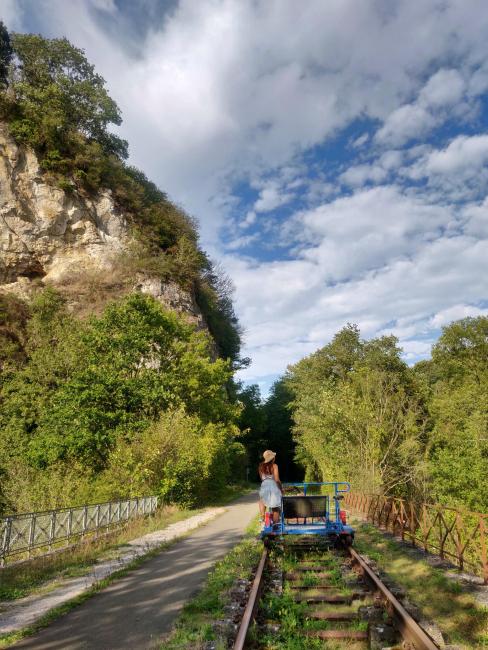
The Ourthe, Amblève and Aisne Valleys
The Western and Eastern branches of the Ourthe unite at Houffalize, which witnessed fierce fighting during the Battle of the Bulge for control of its strategic bridge. A Panther tank stands in the town square today to commemorate this. The river continues west to La Roche-en-Ardenne, still dominated by its ruined castle, said to be haunted by the ghost of Berthe de la Roche, which sometimes puts in an appearance at the son-et-lumière shows in the summer. Next, the Ourthe passes Hotton, with its famous caves and solar-powered fountain with a statue of the cartoon character Le Chat. Then it veers east to Durbuy, a popular destination for walkers, mountain-bikers and canoeists, then Hamoir before the Amblève joins it at Comblain-au-Pont and it continues north to join the Meuse at Liège.
The Amblève rises in the Hautes-Fagnes and flows through Stavelot, formerly ruled by a Prince-Abbot and the site of a notorious massacre of American POWs in December 1944, now commemorated by a memorial and visitors’ centre. The river flows over the largest waterfall in Belgium at Coo, and continues to Aywaille, with its ruined castle and Saturday market, before joining the Meuse at Comblain-au-Pont.
The Aisne rises at the Fagne de Pouhon and flows via Freyneux and Amonines to Erézée, where visitors can board the Tourist Tram that runs along 11km of former railway track along the valley to Lamorménil. The village of Roche-à-Frêne takes its name from the prominent puddingstone boulders and outcrops that surround it. After passing the seventeenth-century Chapel of St Denis at Juzaine, the river joins the Ourthe at Bomal, with its eighteenth-century château and its popular rock-climbing routes.
The Our and Sûre Valleys
The source of the Our is on the Hautes-Fagnes plateau and it flows along the Belgo-German and Belgo-Luxembourg frontiers to Vianden, where the exiled French writer Victor Hugo stayed for a few months in 1871, before joining the Sûre at Wallendorf, a town of which half is in Germany and half in Luxembourg.
The Sûre then continues to Martelange, a former slate-quarrying centre, before entering the 380-hectare Haute-Sûre Lake, created by the dam at Esch-sur-Sûre to power a hydro-electric power station. Today the lake is a popular place to sail, swim, walk and cycle. The Sûre continues to Ettelbruck, the centre of the 1848 Luxembourg revolution, then to Diekirch, with its famous brewery and the National Military History Museum, before joining the Moselle at Wasserbillig, the lowest point in Luxembourg (at 132m above sea level) and the birthplace of Jacques Santer who served as President of the European Commission from 1995 to 1999.
